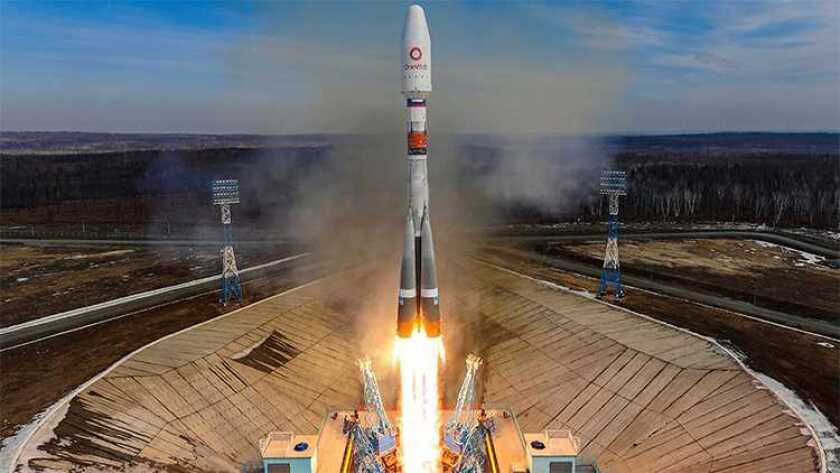What does every go-ahead satellite company need? I’m using the term “go-ahead” ironically, because some of the industry’s older companies have been around since the 1960s, when they were a symbol of our new modern age, and today they’re just a little tired.
Five or six decades ago the only way to achieve intercontinental communications was via satellites that orbit at 35,786km above the equator. This was a huge success that allowed us to watch international news for the first time, such as the landing of Apollo 11 in 1969 (yes, I watched that).
Within a short time there were satellites connecting ships at sea, and others beaming TV channels direct to people’s homes. Three decades ago, I had a steerable 90cm-diameter dish on my roof in London that picked up direct-to-home (DTH) TV channels from right across Europe and also broadcasters’ feeds to their studios. (Sorry neighbours, for the noise of the motor as I swivelled from SES’s Astra 1A to one of the mid-Atlantic Intelsats.)
But the internet has taken over, as you know, and demand has shifted from geostationary satellites (formally “geosynchronous equatorial orbit” satellites, thankfully abbreviated to GEO) to low Earth orbit (LEO) and medium Earth orbit (MEO) satellites. These promise fast internet speeds across the planet, without the bother of building fibre-to-the-home (FTTH) networks, 4G/5G mobile networks or fixed-wireless access (FWA) services.
We’re already in an era of fast-developing competition for LEO satellites, with SpaceX’s Starlink offering in many parts of the world speeds exceeding those of local fixed broadband networks. Some are also promising direct connections to mobile phones.
OneWeb has resumed launches, having found two alternatives after losing its previous launch arrangements with the Russians. Now NewSpace India and SpaceX will complete OneWeb’s constellation of 648 satellites by the middle of 2023.
And there are more to follow.
The Vulcan
Amazon wants to build a network of 3,236 LEO satellites to cover the world with high-speed internet, under the Project Kuiper brand. It was due to launch two prototypes at the end of 2022, but moved the dates to early 2023 and has a new launch partner, a Boeing/Lockheed Martin joint venture called Vulcan.
In June 2022, the Canadian company Telesat applied for a licence from UK regulator Ofcom to build its LEO network, Lightspeed. It plans a modest 198 satellites. At the other end of the scale is GuoWang, a Chinese project that aims to launch 13,000 satellites.
Meanwhile, Irish telecoms entrepreneur Declan Ganley, has started the procurement process for 600 LEO satellites in a network called Rivada. These will be positioned 1,050km above the surface and will be interconnected by 2,400 laser optical links. Ganley wants to start launches in 2024 and hopes to be finished by mid-2028.
Rivada says it will target telecoms, enterprise, maritime, energy and government services markets, and it wants to select a prime contractor for the space segment, parts of the ground segment, and system integration for its LEO constellation, in addition to selecting its launch service provider.
There’s another satellite project we might hear more of by early 2023: Laser Light, whose founder, Bob Brumley, is trying to finance a network that will combine satellites and fibre, using lasers to link ground stations and satellites.
So far, though, each satellite business has largely remained in its own bubble. Intelsat, whose first satellites delivered the images of the Moon landing in 1969, still has a great GEO fleet, as do Eutelsat, created in Paris in 1977 as a European alternative; Inmarsat, created in 1979 to build a service for shipping; and Société Européenne des Satellites, which was formed in Luxembourg in 1985 to deliver TV channels direct to European homes, and was renamed SES in 2001.
Connected world
The last half-century has been a relatively short period in which we saw global communications develop from having to book expensive international calls days ahead (and then you got three minutes maximum) and TV programmes being ferried around by jet planes carrying tapes or even film cans.
But although they transformed the world in half a century, Intelsat and its peers are now legacy companies. Eutelsat’s revenues on two dozen satellites are falling 4.8% year on year, for example. Intelsat, which has 52 satellites, filed for bankruptcy in 2020, and has been loss-making since then and has a market cap that is effectively zero.
Inmarsat, based in London, with 14 GEO satellites, is planning to merge with Viasat of California. The US$7.3 billion deal was announced in November 2021 and a UK markets enquiry is due to report on it by March 2023.
New role needed
These GEO companies need a new role. Their jobs of delivering TV channels has been replaced by broadband internet. Some of them are snuggling up with LEO companies, notably Eutelsat, which is planning a merger with OneWeb.
GEO satellites were a cool innovation when they proposed in 1945 by science-fiction writer Arthur C Clarke. But today, something more is needed.






